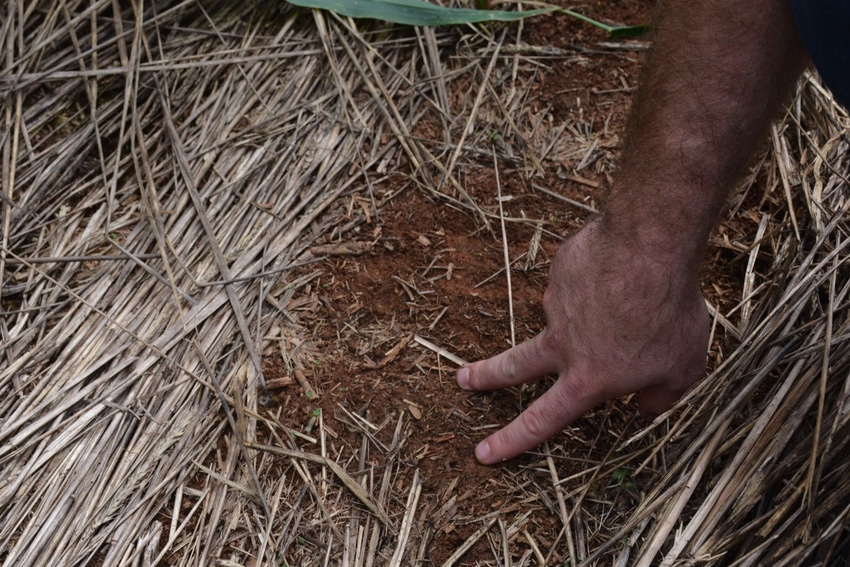
The Soil Health Institute estimates farmers manage some 70 percent of the land in the United States and the individual decisions they make on a daily basis influences soil, air and water quality and other natural resources.
The Soil Health Institute was launched in 2013 in Morrisville, N.C. Wayne Honeycutt, president and CEO of the institute, said the mission is to safeguard and enhance the vitality and productivity of soil through scientific research and advancement. Conducting work that is economically viable and increases productivity for farmers and ranchers is vital, he said.
“Increasingly farmers are more innovative,” Honeycutt said during a forum on improving soil health at the North Carolina Biotechnology Center in Research Triangle Park Feb. 22.
Honeycutt cited the increased use of cover crops such as tillage radishes as an example of this innovation. Tillage radishes aren’t harvested, but grow and die and burrow down and break up hard pans in the soil. Carbon is deposited above the surface and at depth. “This is important because of the relationship between soil organic carbon and available water holding capacity or water that is available to plants,” Honeycutt said.
“By my calculations when you increase the soil organic carbon content by 1 percent you’re increasing that soil’s ability to hold plant available water by anywhere from 2,500 gallons per acre to 12,000 gallons per acre. Think of the resilience that you can build into your food production system by increasing the soil available carbon,” he said.
Soil health is many things but increasing organic matter is central, Honeycutt said. He cited research published in peer-reviewed scientific journals that shows that no-till builds organic matter and increases soil organic carbon. No-till provides a mulch that helps shade soil, control weeds, increase moisture retention and improve the allopathic properties where different compounds in the material help control certain soil borne disease pathogens.
“No-till and cove crops are a ‘win-win’ situation,” Honeycutt said. “Enhanced soil health is good for productivity and the environment.”
The Soil Health Institute has developed an action plan identifying steps to take to improve soil health across the United States. A key goal is to improve farmer productivity through improved soil health. Honeycutt said priorities include increasing available water holding capacity, increasing infiltration rates, developing disease suppressive soils and enhancing nutrient availability through soil health.
“Eventually, farmers and consultants will be able to operationalize this information and knowledge,” Honeycutt said. “One of the steps in our action plant would give them the ability to basically build a production system of crop rotations, tillage practices and cover crops to achieve a targeted level of resilience to drought and a targeted level of increase for available water holding capacity.”
In the meantime, San Francisco-based Trace Genomics is working with farmers by providing testing kits to measure soil health. Diane Wu, Trace Genomics president and co-founder, said farmers turn to the kits to determine the benefits of composting, cover crops, no-tillage and other practices.
Wu explains that farmers return the testing kit with their soil samples to Trace Genomics that then examines the soil and quantifies microbes and specifically disease causing microbes. Trace Genomics provides analytics for farmers to understand the function of microbes and provides interpretation and actionable steps for farmers to improve soil health.
“We look at soil health from two sides of the same coin: disease and health,” Wu said.
“High microbial diversity typically indicates healthier soils,” she said. “What we’ve seen from our data is that when you have continuous cropping of the same crop, that microbial diversity lowers with cropping cycles. Recommendations for microbial diversity include composting, rotations and cover cropping.”
About the Author(s)
You May Also Like






